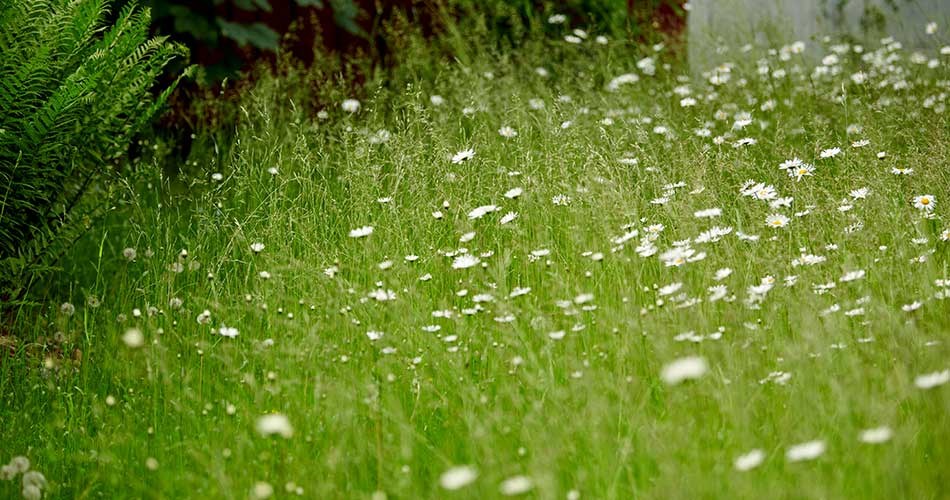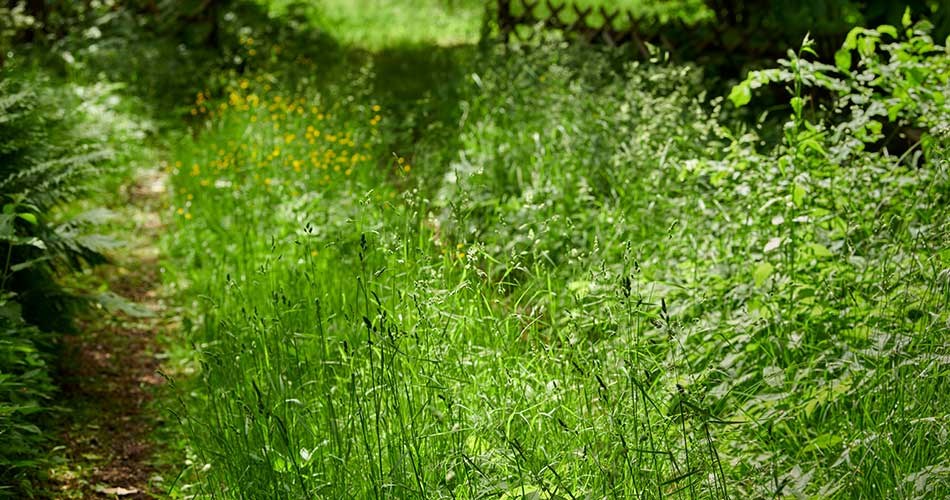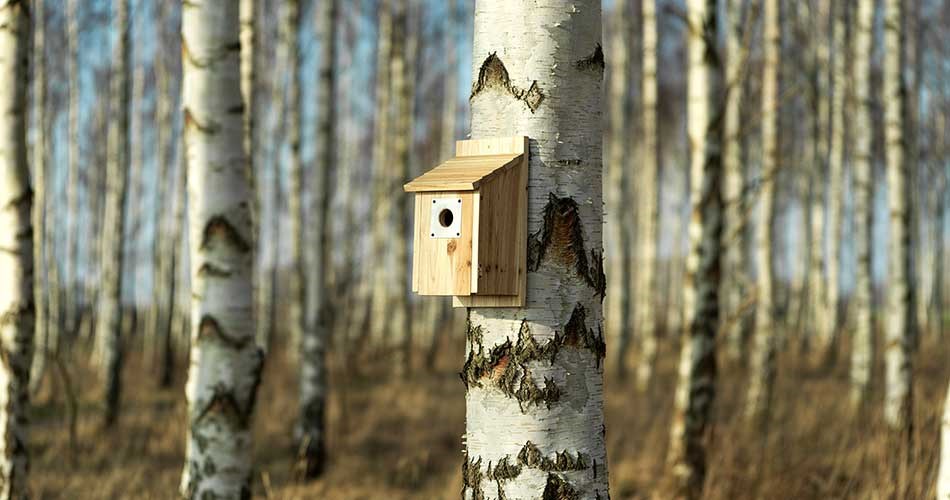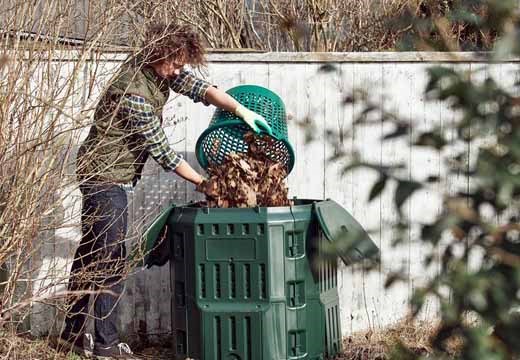How to make a wild garden
Benefits of creating a wild garden
A wild garden is a garden that is designed to imitate the processes of nature and create a sanctuary for different species. There are many benefits to having a wild garden.
Firstly, a wild garden helps to preserve and increase biodiversity locally. Biodiversity, or biological diversity, refers to variety and variability in nature, and it contributes to a balanced ecosystem. By creating a natural sanctuary for insects, you contribute to their survival and help them maintain their role in the ecosystem. Insects are vital since they play a large part in pollination and decomposition, while also forming a link in food chains.
To can either turn your whole garden or just a small part of it into a wild garden, and it only needs minimal maintenance. By letting nature grow freely, you won’t need to mow the lawn, clear weeds, or use chemicals. Not only does this save both time and money, but it also protects the environment.
Finally, a wild garden can be a source of joy and inspiration, since wild gardens can be incredibly beautiful. Just think of a beautiful flower meadow and imagine that it is in your garden. Observing natural life in your garden can also be enriching and stress-relieving. It can also be a source of learning and wonder, especially for children who are able to experience nature first-hand.
All in all, a wild garden is a sustainable and rewarding way to create a vibrant and biodiverse environment that benefits both nature and people.

How to create a wild garden
Wild gardens can take many forms. One method is to just let your garden grow without any intervention. Then grass, weeds, and wildflowers will grow into large oases for the insects. You should note, however, that this will have an impact on how you can spend time in the garden.
Another method is to create wild gardens in specific areas of your garden and then keep other areas for play and living. It can be created out at the opposite end of the garden from the patio and play areas, so children and adults are not too disturbed by the many insects. Dedicate a corner, flowerbed, or a large area to the wild garden, depending on the size of your garden and additional needs. Then follow these simple steps:
- Once you’ve decided where you want your wild garden, you can buy some flower seeds. Find a mixed pack that contains many different flowers and plants that grow well in the Nordic climate. Decide whether they should last a single season or multiple seasons.
- Remove the top layer of grass and wild plants in the respective area, and then thin out the soil by removing 10 centimetres of soil. This lets you extract the nutrition from the existing soil, after which you need to add 1 centimetre of sandy soil and rake the soil lightly. Wild gardens thrive best in nutrient-poor soil.
- Take your seed mix and spread lightly over the ground. Use a rake lightly over the area so that the seeds are not just lying on top of the ground, but are gradually mixed with the soil.
- If the soil is dry, water the area with gentle spray from a water hose so that it becomes moist and provides good conditions for the seeds to germinate. If you plant your garden during a period of high temperatures and very dry days, you should water the area regularly.
You will typically be able to see the first flowers sprout in just a few weeks. And with a good flower mix, your private flower meadow will look stunning with all the colours of nature.
What are the best plants and flowers for a wild garden?
It’s important to choose plants that are suitable for the growing conditions of the Nordic region, as they will have better chances of survival and require less care. The Nordic climate can be challenging with cold winters and fluctuating weather conditions, so it is important to choose plants that can tolerate these conditions.
The right flowers and plants can vary depending on climate, soil conditions, and sun exposure. Among the most suitable plant shrubs for a wild garden are European spindle, holly, common dogwood, rowan, and sloe. These shrubs thrive well in the Nordic climate and can add colour and structure to your garden.
There are also several options when it comes to perennials. Daylily, meadow geranium, foxgloves, leopard's bane, hostas, comfrey, male fern, soapwort, Siberian iris, Solomon’s seal, wolfsbane, and cow parsley are all good choices. These perennials are hardy and can bloom beautifully in our gardens.
How to take care of your wild garden
In high season, as mentioned, your wild garden only requires watering if it is very hot and dry. However, during the off-season, i.e. the cold months, there are some special measures that must be taken to keep the garden healthy and prepare it for a new season.
First of all, it is important to clean up the garden. Clean the flower meadow in the autumn and remove wilted leaves and plants, as well as any dead branches. This will help prevent weeds and diseases from spreading. You can compost the organic waste and use it as natural fertiliser later.
If you have bought flower seeds that only last for a single season, then you will need to thin the soil again in the spring and sow new seeds. On the other hand, if you find a mixture with perennial plants, you can expect flowering for 3-4 years until thistles and grasses dominate the area. Then you can plant them again.
What to avoid in your wild garden
There are two things that do not belong in a wild garden: fertilisers and pesticides. Fertilisers will provide too much nutrition for the strongest species, which can lead to a reduction in biodiversity as the weaker species are outcompeted. It is therefore best to have nutrient-poor soil in which the most undemanding species can thrive. It is not only artificial fertilisers that should be avoided, but also natural homemade compost, which can create an imbalance in nutrients. It is better to use your compost in the vegetable garden and let the plants fend for themselves as they would in nature.

Pesticides are also not welcome in a wild garden, as they destroy the natural distribution and growth of various plants. In addition, pesticides can do great damage to the microorganisms found in the soil and garden, and they can also seep down to groundwater. Also avoid homemade weed killers and pest repellents, since they are likewise unnatural.
In general, be careful of using unnecessary resources in your wild garden. If you’re starting from scratch, you may need to add materials like rock, sand, and plants, but think about where those materials come from. It is better to use field stones instead of hewn and processed granite, and rather choose plants that do not require sphagnum to grow.
Other elements of the garden that attract animals
In a world where nature and biodiversity are under constant pressure, it is important to create habitats for insects and other small creatures. Fortunately, there are many things you can do in addition to just creating a wild garden:
- Set up bee and insect hotels
- Create water and land areas
- Plant shrubs, bushes, and trees
- Place out lots of stones
One of the most effective means of attracting more insects into the garden is with bee and insect hotels. These small, artificial structures act as oases for wild bees, ladybugs, butterflies, beetles, spiders, and more, where they can find shelter, food, and a place to reproduce. A bee or insect hotel contains various elements that are crucial to the insects’ survival. You can easily obtain all the necessary materials and make your own insect hotels at home.
Water is essential, and it attracts various insects and allows them to drink and multiply. Therefore, place a small water bath or water container near the insect hotel and regularly fill it with water during the periods when it does not rain.
The soil in the garden is also of great importance. Make sure the soil contains small holes or cracks where insects can burrow down to find shelter and lay eggs. By adding compost or leaves to the soil, you can create an ideal environment for the insects.
Shrubs, bushes, and trees play an important role in the ecosystem of insect hotels. They act as shelter for the insects, and their flowers or fruits attract different species. By planting flowering shrubs and trees near the insect hotel, you can ensure that there is always enough food for the little creatures.
Finally, stones are essential for biodiversity. The stones also act as hiding places and give the insects a sanctuary from predators. They can also attract certain insects that prefer to build their nests or lay eggs under the stones.
Revitalise your garden with products from Biltema
At Biltema we have numerous products to make your garden livelier and cosier. If you also want more birdlife in your garden, you will find the right products at Biltema. We have a large selection of birdhouses and birdfeeders that can attract different species and provide them with a safe base and food source.

Birdhouses are not only a decorative addition to a garden, they also provide birds with a sheltered place to build their nests and raise their young. Biltema’s birdhouses are of high quality and designed to withstand weather and wind, while providing a pleasant experience for the birds.
If you want to decorate your garden with cosy elements, we also offer plenty of garden lighting and garden furniture. With the right lighting, you can ensure a pleasant atmosphere in the garden that promotes relaxation and togetherness. And Biltema’s garden furniture is both stylish and comfortable, so you can enjoy your garden to the fullest.




